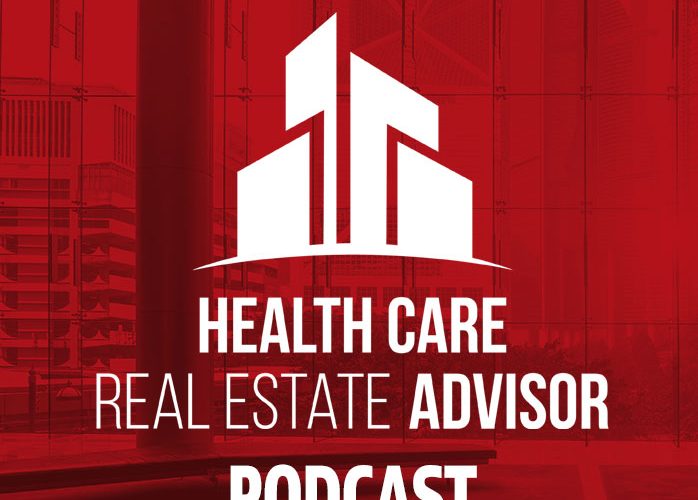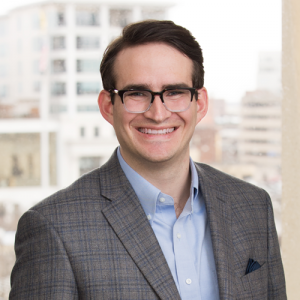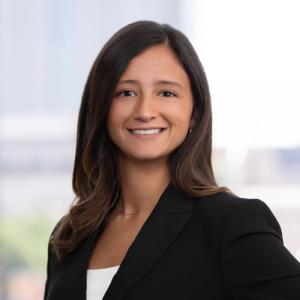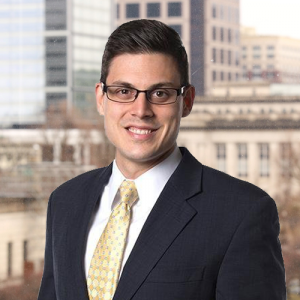Using Existing Health Care Assets to Advance Social Determinants
Using Existing Health Care Assets to Advance Social Determinants
Few hospitals and health systems currently have plans in place to address social determinants of health (“SDOH”) in their communities, but more aim to structure their policies, programs, and initiatives to better address these issues in coming years. As providers brainstorm ways to structure and implement SDOH strategies, each should consider how its existing asset portfolio (including existing real estate assets) could be used to effectuate those SDOH goals. This upcoming panel will focus on how some systems already use these assets in a such manner and their SDOH initiatives more generally. The goals of this panel discussion will be to (1) help attendees have a better understanding SDOH, (2) hear from providers as to their SDOH initiatives, and (3) provoke attendees’ thinking about how their existing assets may be used to address SDOH in their communities.
Podcast Participants
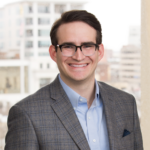
Addison Bradford
Hall Render
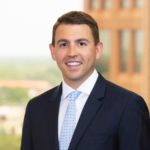
Matt Paradiso
Hall Render

Ashley Brand
CommonSpirit Health

Patricia “Pia” Dean
Denver Health
Today, we’re preventing using existing healthcare assets to advance social determinants, presented by Hall Render attorneys Addison Bradford and Matt Paradiso.
Addison Bradford: Thank you and welcome everyone. As Julie mentioned, my name’s Addison Bradford and I’m an attorney at Hall Render within our real estate team, and my practice focuses on assisting healthcare providers with real estate transactions. Today, I’ll be moderating a panel discussion with three people. We have Pia Dean, who’s the chair of the board of directors for Denver Health, Ashley Brand, the system director for Community and Homeless Health or CommonSpirit Health, as well as my college Matt Paradiso who’s within our real estate section at Hall Render. I’ll give everybody on the panel a little bit of time to introduce themselves a little bit more, but just a few more logistics.
Addison Bradford: We plan for this webinar to be 45 minutes and it will have a conversational format. We will try to stick to that 45-minute timeline as best we can. If you have any questions, feel free to put them in the question-and-answer box and we’ll be happy to the extent we can weed them into our discussion. The goal of today’s webinars is threefold. It’s one to help our attendees have a better understanding of what social determinants of health are, hear from a couple of providers about their existing social determinants of health initiatives, specifically with regards to hospital assets, and then to just hopefully provoke everybody’s thinking about how hospitals, health systems and other providers and parties in the healthcare industry can use their assets to address social determinants of health in their communities.
Addison Bradford: Two quick plugs. The first is this will be the first in a series of webinars that will be hosted by our Hall Render real estate section hopefully on a monthly basis, but in the coming spring. Our next one is scheduled for Wednesday, January 27th at 1:00 pm Eastern Time, and that will be over the new normal for managing medical office space. And that will specifically focus on what hospitals and other medical office building operators are doing from a facility’s perspective to manage medical office space. My colleague Joel Swider will moderate the discussion with Julie Carmichael from Hall Render advisory service as a panelist as well as Mark Theine who is the executive vice president of asset management at Physicians Realty.
Addison Bradford: And now our real estate section puts out a monthly newsletter that’s free. So if you’d like to be on that newsletter going forward, feel free to message me or email me after this and we’ll be happy to get you added up. So well with those logistical issues taken care of, I’d like to welcome our panel. So Pia, Ashley and Matt, start with Ashley, we’ll go alphabetical. If you could just tell us a little bit about yourselves, about you and your involvement with social determinants of health.
Ashley Brand: Thank you Addison. Good morning and good afternoon depending on your timezone. My name is Ashley Brand. I am the system director for community and homeless health for CommonSpirit Health. For those who are not familiar, CommonSpirit Health was created by the alignment of Catholic Health Initiatives and Dignity Health as a single ministry in 2019. Our commitment to serve the common good is delivered through the dedicated work of 1000s of physicians advanced practice clinicians, through clinical excellence delivered across our system of 137 hospitals and more than 1000 care centers, serving 21 states, so we have a very broad footprint.
Ashley Brand: I started my career actually providing direct services to those experiencing homelessness on Skid Row in Los Angeles, California. And I have been in and involved with program management, implementation and evaluation for the last 13 plus years, with a real focus on serving those experiencing homelessness but also the larger vulnerable communities as a whole. I’ve been with Dignity Health for eight years. I started in their community health and outreach division for the Greater Sacramento area. And with the alignment between CHI and Dignity Health, we created a real focus on addressing housing insecurity and homelessness and creating a system wide strategy on how we address those social determinants of health focused around housing. Thank you for having me.
Matt Paradiso: Good afternoon. My name is Matt Paradiso and I’m an attorney in Hall Render’s Michigan office. Along with Addison, I’m in the firm’s health transactions practice group and I focus primarily on real estate transactions for hospitals and other health care providers across the United States. As it relates to addressing social determinants of health, my involvement in that area includes writing on the topic and observing how health systems are addressing these issues in practice.
Patricia Dean: And hello, my name is Pia Dean, thank you for having me. I am a healthcare attorney who spent all of my career at a firm in Denver called Holland and Hart. And during that time, I did an LLM, in health law, and fell in love with this concept of medical legal partnerships, which is just simply the idea of adding a pro bono attorney to a fully integrated medical team.
Patricia Dean: And that led to starting a medical legal partnership in Denver. And really what a medical legal partnership is intended to do is advance care management, or most specifically address social determinants of health. That has led us to expand in several different ways, including at Denver health. I’m also the Chair of the Board of Denver health, which is an anchor institution, it’s a safety net hospital, and a large number of FQHCS that serve a very, very vulnerable population. And as such, we are constantly looking at how social determinants of health and these social factors affect the health of our patients.
Addison Bradford: Great, well, thanks, everyone. Appreciate the introductions. Just to start off, social determinants of health is certainly a big buzzword these days. And it means a lot of things to a lot of people. So, Matt, I’m going to pitch this to you first, because you’re my colleague here, but when we talk about social determinants of health, what are we talking about? What do we mean?
Matt Paradiso: Sure, yeah. Thanks, Addison. When we’re talking about social determinants, we’re really talking about the non medical factors that influence health outcomes. So the World Health Organization defines social determinants of health as the conditions in which people are born, grow, live, work and age. And I came across a TED talk recently that was on social determinants of health. And it was presented by Randy Oostra, who’s the CEO and president of Promedica. Promedica is another institution that focuses a lot of efforts on social determinants. And in his TED Talk, he told this story about a young couple who just learned that they were having their first baby, and they went to the hospital to see their doctor for the first time, the OBGYN walks into the office where they meet the young couple, and he’s very concerned. And he says to them, “I’m worried about your baby’s diagnosis.” And the couple confused and startled, says, “Doctor, I don’t understand. It’s our first time seeing you, we just learned we’re having a baby. What do you mean you’re concerned?” And the doctor responds and says, “Well, your baby is a 43604.” And they say, “Well, that’s our zip code.” And he says, “Exactly.”
Matt Paradiso: So I think that story hits at the heart of it. And studies have shown that one’s zip code is a more powerful predictor of health than one’s genetic code. It’s interesting when you hear it like that, but when you start to think about it, it makes sense. It’s zip code tells where you were born, how you live your life, who your parents were the social and economic conditions of your life. And research has shown that social determinants account for substantially more of the variation in health outcomes than medical care does. Up to 50% of a person’s health and well being is based on social determinants. So social and economic factors, physical environment, et cetera, non medical factors, whereas medical care only accounts for up to 20% of a person’s health and well being. And the remaining 30% is shown to be on health behaviors.
Matt Paradiso: Some of the big areas of social determinants are housing, so homelessness, quality of housing, affordability, neighborhood. Others include transportation, food security, employment and education.
Addison Bradford: Yeah, Matt. That’s great information and good statistics. In addition to location, outside of population, what populations are … there are different populations of people that are more likely to face health issues arising out of social determinants of health?
Matt Paradiso: There are, yes. Yes, several different populations. One that comes to mind is homeless population. Studies show that those in the homeless population have emergency, excuse me, rates of emergency department use and inpatient hospitalization at rates that are three to four times higher than those of the average person.
Matt Paradiso: In 2017, the average emergency department visit, the cost of such was approximately $14,000 … $1400 excuse me. So the homeless population three to four times as much presumably suggests that this population has three to four times the amount of health issues. Other populations, low income, why income level shapes one’s overall living conditions, and that affects psychological functioning, influences health related behaviors, such as quality of diet, standard physical activity, tobacco, excessive alcohol use.
Matt Paradiso: Research has also shown a direct correlation between income and health. Almost 40% of those households making less than $23,000 a year reported being in poor or fair health. And that’s compared with households making more than $48,000 a year, only 12% reported being in poor or fair health. So there is correlation between income and one’s health and well being. And on the topic of low income, another quite startling statistic that was published by the Journal of the American Medical Association is that the difference in life expectancy between the highest 1% in income and the lowest 1% is about 15 years for men, and 10 years for women. And just to give that some context, that’s about the same life expectancy as smoking. So it’s startling statistics.
Addison Bradford: Yeah, it is startling. P and Ashley, you guys have had a hand in this throughout both of your careers thus far, how is the healthcare systems understanding and view of the importance of social determinants changed over the past decade or two?
Patricia Dean: Vastly. And it really started a lot with value based reimbursement. When we started realizing how important it was to keep our populations healthier, and it became a major step towards social determinants. For instance, our state Medicaid agency, is now funding things like medical legal partnerships. They’re interested in some of these housing efforts that we’re putting forth, because Medicaid understands that to make value based reimbursement work, you have to do more than just provide care. And as we move away from fee for service, and more into a PM type of system, it is in everyone’s best interest to address the entire patient and really population health. So there’s been a complete change as I’ve seen it, and it was partially the ACA, it was a lot of different things. But it’s really the understanding that a person’s health is, as Matt said, only minimally affected by the healthcare that they’re receiving. It really is these other social factors, which are going to be determinative.
Ashley Brand: Yeah. And I would just add, I think, even from our frontline staff in the hospitals, it’s a recognition from them that we can do as much in the clinical setting. But if those community partners and that collaborative approach to addressing a whole person is not there, it can be very fragmented. And so I think there’s a recognition of understanding the components that must be collaborative and part of the continuity of care to support these efforts. And I think one thing P and I discussed earlier was this is an ongoing iteration of work. There’s never going to be a point where we have a full understanding because things change so rapidly. COVID-19 is a perfect example where nothing’s new, but everything has been exacerbated. But the way we approach it has shifted, especially around those experiencing homelessness in our community. So I think there’s a better understanding, but our approach is going to constantly shift as we continue to improve our collaborative efforts to address the needs of the communities we serve.
Addison Bradford: Yeah, and there is a study recently published in the Journal of Health Affairs and that study analyzed in all new programs involving direct financial investments and social determinants by US health systems for a two year period spanning from January, 2017 through November, 2019. And that study identified 78 unique programs involving 57 different health systems. So that’s about 9.1% of all health systems in the United States. So I think what that tells us is that it’s not an overwhelming majority of health systems who are focused in this area yet, but what the study also showed is that those who do focus in this are making significant investments.
Addison Bradford: The study revealed that 2.5 billion of health system funds were invested in social determinant programs. And the study also broke down the specific categories where health system focused, the largest being the housing area, 1.6 billion, employment was second, 1.1, and so on and so forth. So I think the takeaway there is health systems are starting to recognize these issues. And when they do, they realize how much social determinants really affect someone’s health and well being and they’re making sizable investments.
Patricia Dean: No. Well, I’ll make this really quick. I spend a lot of time working with young residents and medical school students, and the thinking has changed so much that I now see in this generation that’s coming up, a group that says, I will not be satisfied until I can write a prescription for food and a prescription for housing. And so that’s how much there’s been a change in the thinking and the approach that they want to be able to take with their patients.
Ashley Brand: And I was just going to add, I think the exciting part of this work is the ability for health systems and a variety of partners to come together and really create system transformation in this work. The more we work together, the more we partner, the more we’re engaging with our community partners, engaging with those with lived experiences, the better we’re going to create a solution for a variety of different factors that are falling within social determinants of health. But this is an opportunity. And what excites me is when we bring stakeholders together and we break down some of the competitive nature that we often have to address the community need. We are partnering with funders together, [inaudible 00:17:31] homelessness to create a national health system funders for housing justice, which is exactly that bringing health systems together to create a shared agenda and prioritization on how we create an action focused effort moving forward to address housing and insecurity and homelessness, so that it’s really exciting in that factor that we’re coming together to respond.
Addison Bradford: I agree. On the topic of housing and partners, Ashley, who are the types of partners you traditionally work with? And what makes a good partner in this area?
Ashley Brand: I think that question has so many different answers. We want to partner with everyone. We want to partner with other health systems on a national level, we want to partner with other health systems in our local markets, really engaging around housing with the affordable housing developers, the community organizations that are providing frontline services, our homeless continuum of care, understanding the mechanism in which the local CLC or the continuum of care operates, understanding how coordinated entry works, as we look at chronicity of those experiencing homelessness that are moving into housing, versus medical vulnerability of the individuals that we’re serving. So I think it’s really creating space for everyone to be at the table. Trust is a key component of that work. We have to understand and build trust before we can move forward in a collaborative manner. And oftentimes, that takes just meeting normally in person, obviously, virtually right now and breaking down stigmas, breaking down any barriers, creating shared language, oftentimes, there’s a disconnect between the verbiage we use in healthcare, the verbiage that our homeless service providers use, and our affordable housing developers.
Ashley Brand: And so coming together with that collective vision, and then moving that forward into implementation and operation, I think, to me has really been the key in building these collaborative processes. But it’s also thinking outside the box. What opportunities are out there that we haven’t thought of? And how again do we have individuals with lived experiences at the table helping create those solutions?
Addison Bradford: Ashley on this point, we have a question from one of our participants. What are some of the legal barriers and challenges to working with your community partners and with government or privately funded social assistance partners?
Ashley Brand: I think oftentimes it can start with sharing data. So it’s really working through the legal components of covered versus non covered entities in which we share and how we share data and working through that workflow. But there hasn’t been a time where we haven’t been able to overcome that opportunity. I would say with the government side, the challenges is when there’s an internal system. So if the counties are running the local continuums of care, and there’s a local county hospital, trying to figure out how a nonprofit hospital can be supportive of that work is something that we, from CommonSpirit Health are still trying to figure out. But I think understanding the workflow, understanding the services that are in place and how individuals are referred to what programs, is a good starting place, but the data sharing and the referral process has been challenges, but I want to say barriers that have kept us from moving forward in some of these collaborative processes.
Addison Bradford: On this topic of partnerships, we discussed at a more macro level thus far about social determinants of health. Yeah, I know the Denver health has a housing initiative that’s been in place for a couple of years now. Could you maybe tell us more about that program and how keen to be.
Ashley Brand: Sure. We have a relatively large campus, there was a building that we do not need to use. And so we entered into a partnership with the Denver Housing Authority, whereby we’re redeveloping it, which has been a long process because it’s filled with [inaudible 00:21:58]. So it’s taken some time. But the goal is to make it into transitional housing with specifically for …. two floors will be specifically for patients who have tasked medical necessity who are impatient at Denver Health, but have nowhere to go. And so the idea is we don’t want to return anyone to homelessness. So, that will be transitional housing. But that led to other interesting initiatives and ideas.
Ashley Brand: One of the things that we’ve been dealing with is the fact that we have a number of our employees, we have 7500 employees who do not make a living wage. And we’re really doing several initiatives to try to get all of our employees to living wage, and some of that is career pathways and career ladders, but we’re also looking at a program that we’re going to work on with Elevate Land Trust in the Gary Trust, which would allow us to start with 500 families, 250 of which are employees of Denver Health, and over a five year period tried to pull them out of poverty and into home ownership. Ultimately, we feel like the goal has got to be home ownership, because that’s where wealth is built. So that program runs along the lines of identifying these 500 families, and then helping them with a down payment and rent assistance where necessary, but even a down payment to buy that will then forgive over a period of years.
Ashley Brand: The other major project that we’re looking at is another building on the Denver Health campus, which is an old building, but it has good bones. And I think the feeling is that it should be turned into a low cost housing to try to deal with homelessness.
Addison Bradford: And Ashley, I know we only talked in our initial call, I know we talked to CommonSpirit taking a similar approach with the housing with dignity program, although it’s not using an existing asset but an asset of a third party. Can you tell us about that program?
Ashley Brand: Yeah, so our housing with dignity program developed in 2014 in partnership with Lutheran Social Services, and it really focuses and aims to assist homeless individuals with severe chronic health and mental health issues, obtain and retain housing, care and services designed to achieve stability in their lives. The process is that through our hospital case managers, we work directly with Lutheran Social Services staff to identify participants who will be housed in supportive stabilization apartments and receive intensive case management supportive services. And these are individual apartments that are master lease by Lutheran Social Services. Purpose of the program is to provide up to six months of transitional supportive housing to individuals experiencing homelessness and resulting in reduced hospitalization, identification of permanent supportive housing and or independent housing for the individuals.
Ashley Brand: And it really is a collaborative process recognizing many of our programs were focused more on a shorter period of time, 30 to 45 days. And unfortunately, there’s been a decrease in funding for transitional housing. But some of these individuals needed a little bit longer length of time to get stabilized if they needed behavioral health services, including substance use services. This is a low barrier program for individuals who are interested in moving into housing. This program has been expanded in 2016. We started with five apartments and expanded to 15. And the recognition is that through our partners that are able to work through the processes, I get identification, if they don’t have it, work on income, help with obtaining coverage, if they don’t have it already, or linkage to a primary care provider. And during that time, also getting them ready to move into a more permanent solution.
Ashley Brand: What’s unique about this program is because they are master leased apartments, oftentimes an individual can move from our program, housing with dignity, into their own permanent housing without actually moving in our apartment. So we can use that apartment and transition them into multiple programs, which allows them to create consistency. But it’s also a program where we meet the individuals where they’re at. A story I often share is one of the individuals that was referred to the program, I believe it was about two or three weeks that they slept on the porch outside because they weren’t comfortable sleeping inside. But it was also about meeting them where they’re at and developing that safety, that comfortability of moving inside. And eventually they did. But we want to allow the individual to move at their own pace.
Ashley Brand: This is really focused on establishing individual goals led by the individual we’re serving. And so they’re developing what their priorities are, and we’re moving with them. And I think as a health system, this is really where collaboration is so critical, finding those community partners who are able to engage with the individuals and the participants in the program, understand their needs and help work through that process together. It’s been a great program. The reality is individuals are very ill. So we do see a decrease in hospital inpatient and length of stay, but we also recognize that as they find housing, some of their illnesses actually tend to exacerbate because they’re not in this flight or fight mode anymore. And now they’re addressing these long term chronic illnesses that they hadn’t been able to address early on. But for them to have a roof over their head, have a safe place to receive services and a plan to move in permanent supportive housing has been really successful.
Addison Bradford: We’ve talked about creating these opportunities, but I imagine it’s also difficult identifying the populations that are served by these housing opportunities. I think it’s probably difficult to ask somebody specifically about their living situation as it could be a very sensitive conversation with the patient. Ashley and Pia, how has Denver Health and CommonSpirit worked to identify patients and other people within your communities that would be served by this?
Patricia Dean: That’s a really critical piece. I think that every health system should be doing a social questionnaire, if you will, there’s ICD-10 codes now for homelessness. It’s available in Epic, it’s available in eClinicalWorks. There has to be a screening upfront for social risk factors. And it’s no different than checking for whether people smoke or consume too much alcohol, or have a gun in the house. It becomes as important to say identifying food insecurity and housing insecurity. So we’re not finding it hard to identify these people. We’re not. And we’re using a mobile band to go out and work with people who are living in the homeless community outdoors. And so that’s another way to identify folks. So we’re not finding it as hard to identify who needs help. It’s just a matter of providing all the help that’s needed.
Ashley Brand: Yeah, and the only thing I would add to that we are working, as we have aligned and have a large footprint creating consistency around those types of screenings. I think it is a sensitive topic that some people don’t feel comfortable sharing. So I think one of the challenges that we have is they might not disclose that they’re experiencing homelessness up front, but throughout their time in the hospital, either in the ED or inpatient setting, it does come out that maybe they’re couchsurfing or they’re living in their car. But I think them recognizing what homelessness includes, is something that we want to both educate our clinical teams that are asking these types of questions, but also empowering the individuals that it’s a safe place for them to share some of the challenges that they’re experiencing.
Ashley Brand: I think the one thing that we are really interested in doing a better job is around housing insecurities. Because we’re oftentimes not asking, are you behind on your rent? And I think if we are really looking at this work, addressing both the homelessness side and the housing insecurity side is really critical. Otherwise, we’re going to see the inflow into homelessness just as much as we’re contributing to those moving out of homelessness. And so I think having both sides is going to be extremely important.
Addison Bradford: How are a lot of these projects funded and it looks like we have a question from our audience, specifically, what type of government assistance is available for these programs?
Ashley Brand: Pia, you want to go with the government one?
Patricia Dean: Sure, I’d love to. I didn’t want to keep interrupting you Ashley, I’m sorry. We’re finding that the government is getting easier and easier to deal with, as I mentioned before, especially Medicaid agencies. Now there’s, of course limitations, but there really is an understanding that these social risk factors play a very important part in health. And one of the things that is important is to be able to measure both objectively and subjectively how people are doing with increased interventions. And we’ve been able to pull that data together in a way that we’ve been able to say to our state Medicaid agency, we can reduce the number of ED visits, we can reduce the number of days in hospital, we can reduce the number of missed appointments, we can reduce the number of days of missed work. Not only that, but people report feeling better, being more compliant with medications and being able to look for ways to sustain themselves in a more effective way.
Patricia Dean: So I think that the governmental funders are becoming much more interested in doing this, I think starting with state Medicaid agencies is really important. But I know our own legislature is interested in finding ways to fund things like medical legal partnerships, they’ve opened an office of public guardianship, which is huge and can be very, very helpful. So it’s getting easier. There are some legal barriers to all of these kinds of issues, but I think that the governmental involvement is becoming easier to accomplish.
Ashley Brand: Yeah, and I think a lot of our partners are receiving government assistance. And from CommonS1pirit, it’s kind of how do we fill some of those gaps? And in terms of funding, we do have grant funds, smaller amount that we do provide around housing. One model that we’re looking at in rural community in California is scattered site permanent housing. So partnering with a small, affordable housing developer where they’re actually purchasing homes, remodeling them and then creating shared housing in which housing choice vouchers can be used. And we’re providing the funding to purchase the house and then the housing choice vouchers are able to support the operating cost on that. We also have social innovation grants. But one of the main things that we’ve had historically and since 1990s, our Community Investment Program, and it provides below market interest rate loans to organizations to improve the health and quality of life in their communities.
Ashley Brand: This includes resources to organizations that support projects of housing, access to jobs, food and education and health care for people of low income communities and helping the most vulnerable. Right now the portfolio is to support over 114 community investments and 165-170 million in approved loans. And around housing in fiscal year 20, they’ve approved 12 loans for a total of 27.7 million, leveraging 101 million in funding and supporting the development of 368 affordable housing units. And those community investment loans oftentimes are in collaboration with government funds that are coming and other investors at the table. So I think we’re trying to pull really all the different resources we have. But it’s also again, going back to the partnership with other health systems is, how do we leverage our collective resources to invest in the community?
Addison Bradford: Okay, you mentioned some interesting analytics about days missed from work, what other measurements do we have for measuring the effectiveness of these programs? And for any health care providers that are looking at potentially implementing social determinants of health initiatives? Are there realistic goals that they can set based off those metrics?
Patricia Dean: I think that there are realistic goals. So now we’re out of my expertise. But I work with epidemiologists on this. And so they use all validated measures, and whether it’s [inaudible 00:35:57], or short form, the SP nine or six, there are multiple validated measures that we can use. One of the things that we’re experimenting with and starting to play with is this idea of looking at the number of kids with an EAP. Yeah, there’s lots of different metrics. But I think that is the key, is to keep measuring what you are doing and what you’re trying to put forward, so that we have ideas about effectiveness.
Ashley Brand: Yeah, and I would just add, I think the evaluation piece, understanding it and defining success up front is such a critical component of it. What type of measurements do you want to see improve or do you want to measure over time to determine if a program is successful or not? I think from a housing perspective, if we’re looking at referrals from health systems, there’s two components of it. There’s the internal component of utilization. So doing a pre and post survey of either six months to a year around hospital admissions, length of stay, ET visits, and understanding the pre and post of that. And like I mentioned, it is important to understand that sometimes, you actually see an increase in utilization, but it’s more appropriate utilization and a shorter length of stay, because they do have a place to reside to come back to.
Ashley Brand: But also from a community perspective and what we really look at and partner in with our organizations is, what type of information is important to collect to show the community impact? Looking at overall impact around law enforcement, other types of services that they may have been utilizing, but no longer need once they’re permanently housed. Linkages and successful appointments with their primary care providers, follow up with behavioral health, follow up with any type of legal services required, ensuring that they’re completing their applications for any type of benefits they may be eligible for, and then the linkage to any other resources. So I think we want to look at both sides when we identify these programs, but that’s more focused on housing. I think as Pia mentioned, there’s a lot of different metrics to measure, but you really have to understand that upfront. Otherwise, trying to do it on the back end, I think is what causes a lot of programs not to maintain funding, because they haven’t thought through that process.
Addison Bradford: Great. So we’re getting close to our time here. So I want to make sure I ask this question to you all. Denver Health and CommonSpirit certainly I would consider leaders in this area, and I’m not just saying that. But what would you say to a hospital or a health system that desires to develop or structure an initiative or program to address social determinants of health? What advice would you give them?
Ashley Brand: Well, it’s interesting because a question just came up about the hospital community health needs assessments. And I think that’s a great place to start. Identifying the needs in the community is assuming that you really take a proactive community participation approach of those focus groups and engaging the community in identifying your priorities within your community health needs assessment. But I think that’s a first place to approach. It identifies the priorities that maybe your community members have already identified. I think it’s having these conversations with community organizations of what resources exist, and where there’s gaps in services.
Ashley Brand: I think it’s really important not to go in with this as a solution we’re going to create because oftentimes, you’re the duplicating or you’re fragmenting the local continuum of care. So taking the time to understand the needs and then building the partnerships so that the workflow makes sense, you can see the seamless transitions of care from one resource to another for the population you’re serving. And I think it’s okay to start small. Every health system has a different portfolio of investments and what that looks like. But starting small and building that understanding, building the business case, engaging leadership, and engaging your clinical teams, I think are all part of that process to create a sustainable program that’s integrated within the culture of the organization.
Patricia Dean: I agree completely. The health needs assessment is a great place to start to understand what’s going on in your community. And then figuring out what’s out there and who you need to be talking to is key. And then creating those relationships. Ashley mentioned trust earlier. It is a matter of building trust amongst the different community members, and an understanding of who is doing what and how we can build on what each other is doing. And I would urge any system, if they say we can’t go straight into housing, transitional housing or something else, to start where they can, working with food banks, working with entities that can help people get all of the benefits that they are entitled to, which they often are not getting. How many times we hear people say, “I’m not getting my SNAP benefits because X, Y, or Z.” And so I try to attack housing and homelessness in a number of different ways.
Patricia Dean: In Colorado, we have very poor housing laws. So somebody may come and say, “My housing is inadequate or substandard.” And the concept is, can we work around it other ways? Can we find a way to improve their income basis? Can we work with a program to get them a job, there’s a wonderful agency here called Activate, which basically helps people get jobs and then works with them for a year. And so I would say to a hospital, find an entity like that and agree to hire 50 people from an entity like that, in your own institution. The Activate group here, 58% of the people who are now employed, have experienced homelessness within the last year. So there’s lots of different approaches to work the problem. And it is wherever you feel comfortable starting, but I would encourage everyone to go ahead and start small, medium, you’ve got to start somewhere, and it makes a huge difference. And then once you start realizing what the partnerships can bring, it just expands us.
Ashley Brand: Well, great, thank you, everyone. We’re butting up against our time. We appreciate your time, and certainly the conversation has been enlightening from my standpoint. Just for everyone who’s listening, an audio of this webinar will be available in the coming weeks that will be shareable and public. So if there’s any information you need from there, it’ll be available. Also, if you have any questions about any of the items discussed [inaudible 00:43:15] or I just want to have a dialogue about some of those conversations, feel free to contact us. And with that in mind, I’ll kick it back to Julie to wrap us up.
Thanks, Addison. Thanks to all of our speakers actually, for today’s webinar. It was really insightful. If you’re interested in learning any more about any of the topics discussed today, please reach out to any of the speakers. You’ll see their contact information on the screen here or visit our website at any time hallrender.com.

